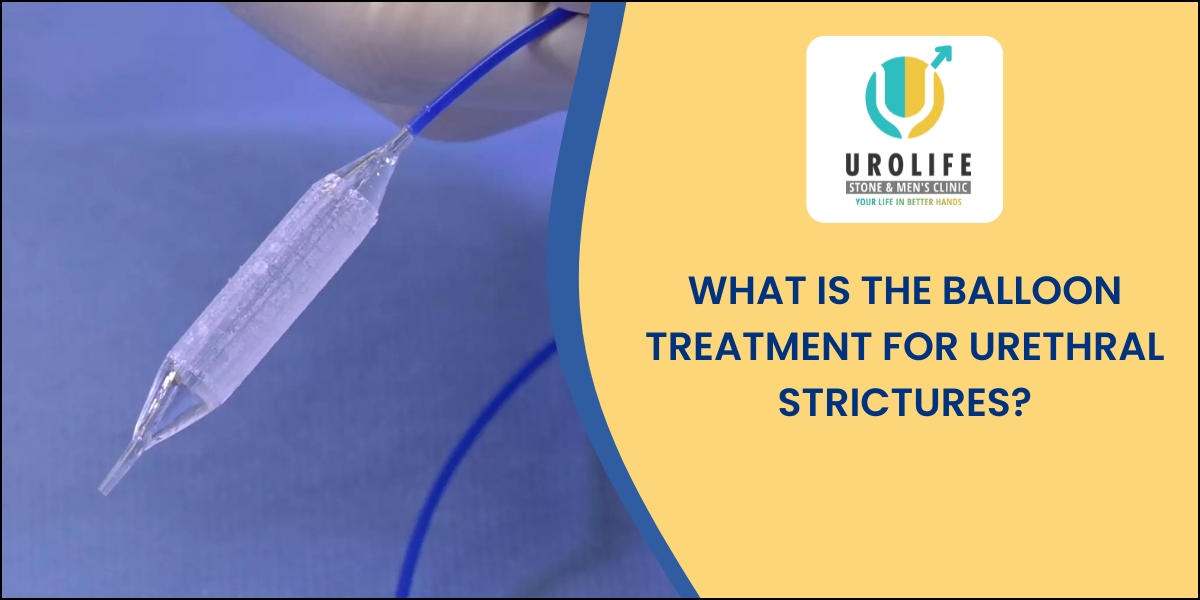Dealing with a urethral stricture—a narrowing of the tube that carries urine out of the body—can be a frustrating and painful experience. Traditional treatments often involved surgery, which could be invasive and require a long recovery. However, medical advancements have introduced a much less invasive option: balloon dilation.
Understanding Urethral Stricture Dilation
At its core, balloon dilation is a minimally invasive procedure designed to open up a narrowed urethra. Think of it like angioplasty for the heart’s arteries, but applied to the urinary tract.
A urologist inserts a special catheter with a deflated balloon at its tip into the urethra. Using X-ray guidance (fluoroscopy) or a direct camera (cystoscopy), the doctor positions the balloon precisely at the site of the stricture. The balloon is then inflated with high pressure, which gently but firmly stretches and opens the scar tissue causing the narrowing, restoring a normal flow of urine.
The Next Generation: Drug-Coated Balloons (DCB)
While standard balloon dilation is effective, a significant innovation has improved its long-term success: the Drug-Coated Balloon (DCB).
A DCB is coated with an anti-proliferative drug (like Paclitaxel). When the balloon is inflated at the stricture site, the drug is delivered directly into the urethral wall. This medication helps prevent the scar tissue from growing back aggressively, which is a common reason why strictures recur after standard dilation. This makes DCB a more durable solution.
Key Benefits of Balloon Treatment for Strictures
Choosing a balloon dilation, especially a Drug-Coated Balloon treatment, offers several advantages:
-
Minimally Invasive: No large incisions are needed. It’s typically performed through the natural opening of the urethra.
-
Preserves Tissue: Unlike some surgeries, it aims to open the stricture without cutting away urethral tissue.
-
Faster Recovery: Patients often go home the same day and can return to normal activities much quicker than after open surgery.
-
Outpatient Procedure: It’s usually done as a day-care procedure, avoiding a lengthy hospital stay.
-
Reduced Risk of Recurrence (with DCB): The drug coating actively works to prevent the stricture from returning.
Is Balloon Treatment Right for You?
Balloon dilation is an excellent option for shorter, non-complex strictures. Your urologist will conduct tests like a uroflowmetry and retrograde urethrogram to determine the stricture’s location, length, and density to see if you are an ideal candidate for this procedure.
Expert Balloon Treatment in Pune
If you are seeking a modern, effective, and minimally invasive solution for a urethral stricture, it is crucial to consult with a specialist who has expertise in these advanced techniques.
Dr. Irfan Shaikh at Urolife Clinic in Pune is a renowned urologist specializing in the management of urethral strictures. He offers Drug Coated Balloon treatment in Pune, that maximizes success and minimizes recovery time.
For those searching for a lasting solution to urinary blockage, consulting an expert like Dr. Irfan Shaikh can make all the difference. Find relief and regain your quality of life with advanced urological care at Urolife Clinic.
Frequently Asked Questions (FAQs)
1. What is the success rate of balloon dilation for urethral stricture?
Success rates vary but are generally high for short, primary strictures. With Drug-Coated Balloons (DCB), studies show improved long-term patency rates, reducing the need for repeat procedures.
2. Is balloon dilation painful?
The procedure is performed under anesthesia, so you won’t feel pain during it. Some mild discomfort or burning during urination may be experienced for a short period afterward.
3. How long does balloon dilation last?
The durability depends on the stricture and the procedure used. Standard dilation may last several months to a few years, while Drug-Coated Balloon treatment aims to provide a much longer-lasting solution by preventing scar tissue regrowth.
4. What is the recovery time after balloon dilation?
Recovery is typically fast. Most men can return to light activities within a day or two, though strenuous activity should be avoided for about two weeks.
5. What are the alternatives to balloon dilation?
Alternatives include visual internal urethrotomy (a surgical cut) and urethroplasty, which is a complex open reconstruction surgery used for longer or recurrent strictures.
